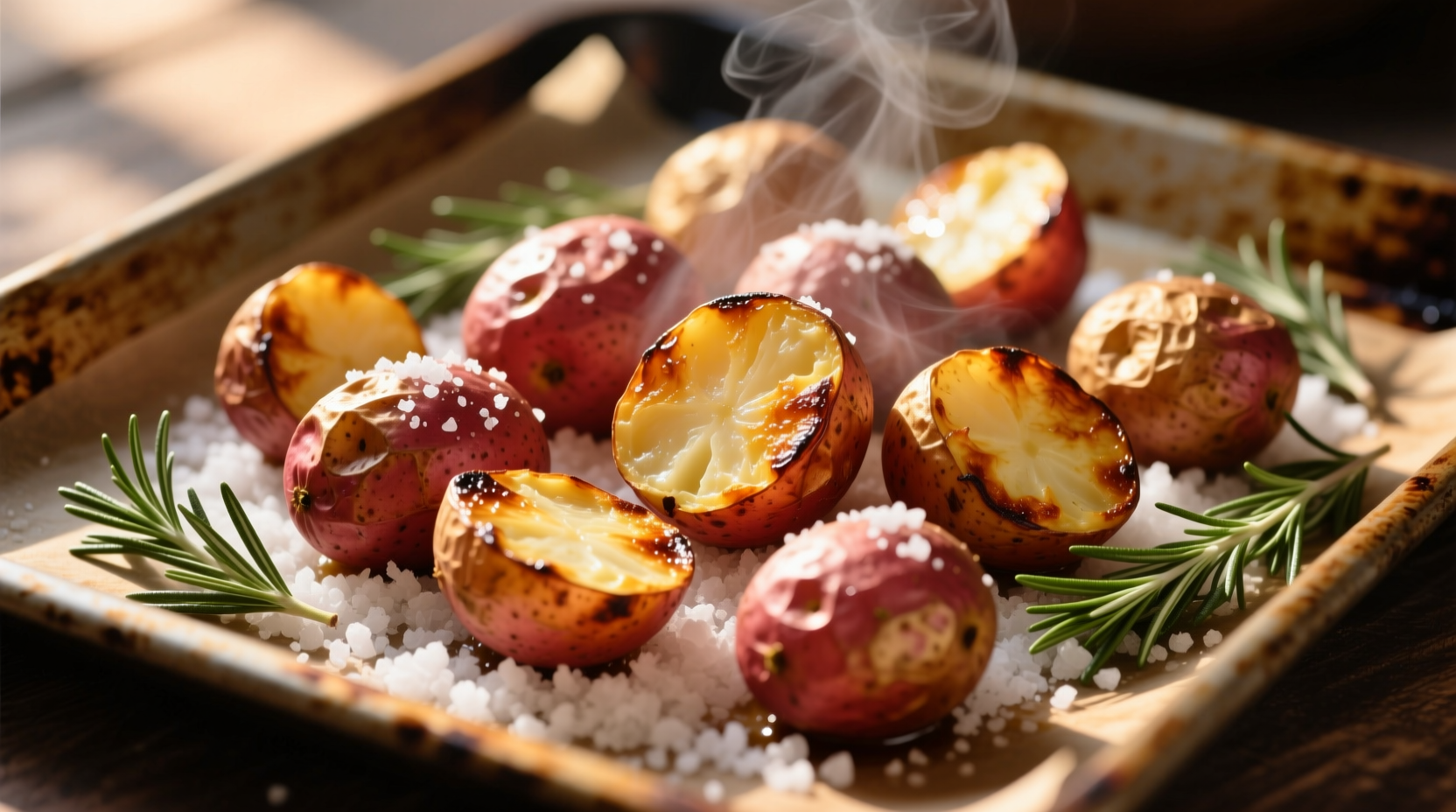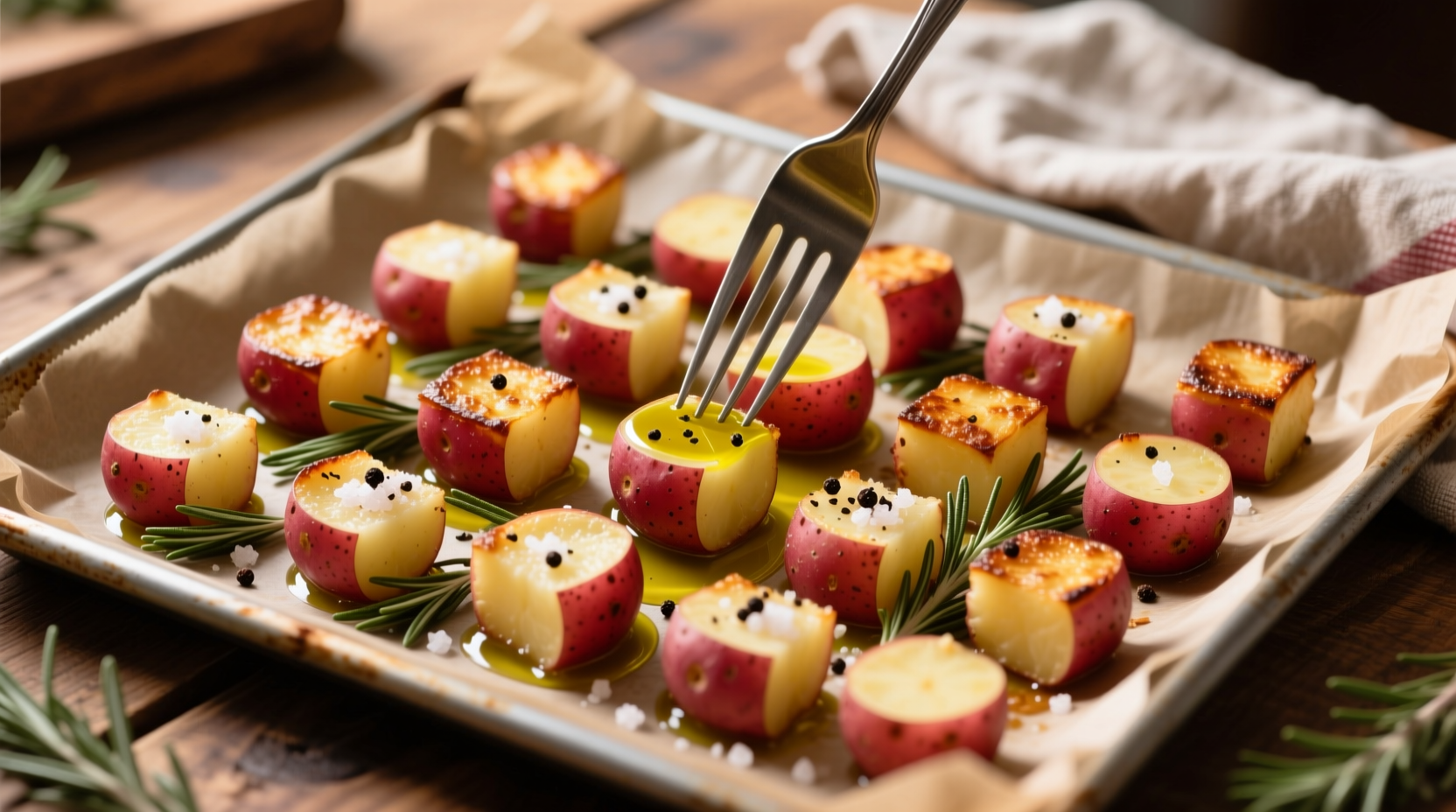Nothing beats the satisfying crunch of perfectly roasted red potatoes with a tender interior. As a professional chef who's cooked thousands of potato dishes across Michelin-starred kitchens and home kitchens alike, I've mastered the precise timing and techniques that transform this humble vegetable into a showstopper side dish. The key lies in understanding how size, oven temperature, and preparation methods affect cooking time.
Why Oven Roasting Works Best for Red Potatoes
Unlike russets, red potatoes maintain their shape beautifully during roasting thanks to their lower starch content and waxy texture. This makes them ideal for oven cooking where you want distinct pieces that hold together. When roasted properly, they develop a delicious contrast between the crispy exterior and creamy interior that boiling simply can't achieve.
Preparation: Setting the Stage for Perfect Results
Your preparation method directly impacts cooking time and final texture. Follow these professional tips before your potatoes hit the oven:
- Washing technique matters: Scrub potatoes thoroughly with a vegetable brush under cold running water. Red potatoes' thin skin traps dirt in their crevices.
- Skin decision: Leave skins on for maximum nutrients and texture contrast, or peel for a more uniform appearance.
- Cutting consistency: Uniform 1.5-inch pieces ensure even cooking. Larger pieces need more time but retain more moisture.
- Drying is crucial: Pat potatoes completely dry with paper towels - moisture is the enemy of crispiness.
- Oil selection: Use high smoke-point oils like avocado or refined olive oil (not extra virgin) for best browning.
| Preparation Method | Recommended Temp | Approximate Time | Visual Doneness Indicators |
|---|---|---|---|
| Whole small potatoes (1-2" diameter) | 400°F (200°C) | 50-60 minutes | Golden brown skin, fork-tender center |
| Halved medium potatoes | 400°F (200°C) | 40-50 minutes | Crispy edges, caramelized cut surfaces |
| 1.5" cubes | 425°F (220°C) | 35-45 minutes | Deep golden color, crispy exterior |
| Thin slices (1/4") | 425°F (220°C) | 25-35 minutes | Crisp edges, slightly flexible center |
The Roasting Process: Timing and Technique
Follow this professional method for consistently perfect red potatoes:
- Preheat properly: Allow your oven to reach the target temperature (400-425°F) before adding potatoes. An oven thermometer verifies accuracy - most built-in thermostats are off by 25°F or more.
- Prepare your pan: Use a heavy-duty rimmed baking sheet. Lightly coat with oil or line with parchment paper (never use aluminum foil which traps steam).
- Season strategically: Toss potatoes with oil, salt, and herbs. Add delicate herbs like parsley after cooking; hardy herbs like rosemary can go in before roasting.
- Arrange for success: Spread potatoes in a single layer with space between pieces. Crowding causes steaming instead of roasting.
- Rotate midway: At the 20-minute mark, flip and rotate the pan for even browning.
- Check for doneness: Test with a thin-bladed knife or skewer. It should slide through the center with no resistance.

Adjusting for Your Specific Situation
Several factors influence your exact cooking time. Understanding these context boundaries ensures success regardless of your kitchen setup:
- Oven type differences: Convection ovens cook 25% faster than conventional ovens. Reduce temperature by 25°F or shorten time by 10-15 minutes.
- Potato size variation: Small new potatoes cook 15 minutes faster than large mature ones. Adjust time based on actual size, not just quantity.
- Altitude considerations: Above 3,000 feet, increase cooking time by 5-10% as water boils at lower temperatures.
- Starting temperature: Cold potatoes from the refrigerator need 5-8 extra minutes compared to room-temperature potatoes.
Troubleshooting Common Issues
Even experienced cooks encounter these potato problems. Here's how to fix them:
- Problem: Potatoes are browning too quickly but remain hard inside
- Solution: Lower oven temperature by 25°F and cover loosely with foil for the remaining cooking time.
- Problem: Potatoes are steaming instead of roasting
- Solution: Ensure potatoes are completely dry before oiling, use less oil, and spread in a single uncrowded layer.
- Problem: Uneven cooking with some pieces done and others raw
- Solution: Cut potatoes to uniform size and rotate the pan 180 degrees halfway through cooking.
Pro Tips for Next-Level Results
Elevate your roasted red potatoes with these professional techniques:
- Par-cook in salted water for 5 minutes before roasting for extra-crispy exteriors
- Add a splash of vinegar to the oil mixture for brighter flavor and better browning
- Finish with flaky sea salt and fresh herbs immediately after removing from oven
- For restaurant-quality crispiness, toss potatoes in a small amount of cornstarch before roasting
Storage and Reheating Guidelines
Proper storage maintains quality for future meals:
- Cool completely before storing in airtight container
- Refrigerate for up to 4 days
- Reheat in 400°F oven for 10-15 minutes for best texture (microwaving makes them soggy)
- Freeze for up to 3 months - spread on baking sheet first, then transfer to freezer bags
Frequently Asked Questions
Can I cook red potatoes at a lower temperature for longer?
Yes, but with trade-offs. At 375°F, cooking time increases to 55-65 minutes. You'll get more even cooking but less browning and crispiness. The ideal temperature range for red potatoes is 400-425°F.
How do I know when red potatoes are done without a thermometer?
The fork test is most reliable. Insert a fork or thin knife into the center of a potato piece. It should slide through with no resistance, and the exterior should show golden-brown crispiness. Avoid squeezing as this indicates overcooking.
Should I boil red potatoes before roasting?
Par-boiling for 4-5 minutes can help achieve extra-crispy exteriors while ensuring tender interiors, especially for larger pieces. However, it's not necessary if you cut potatoes to uniform size and use the correct oven temperature.
Why are my roasted red potatoes turning out mushy?
Mushiness usually comes from overcrowding the pan (causing steaming), using too much oil, or not drying potatoes thoroughly before roasting. Ensure single-layer spacing, moderate oil (1-2 tablespoons per pound), and completely dry surfaces.











 浙公网安备
33010002000092号
浙公网安备
33010002000092号 浙B2-20120091-4
浙B2-20120091-4